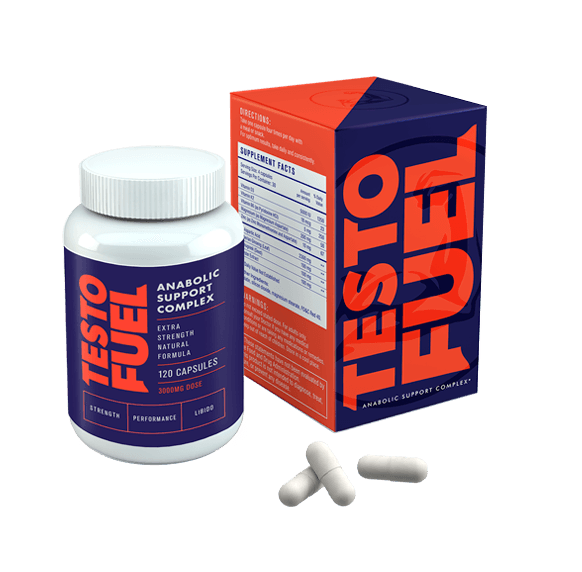
In this weekly workout routine we combine the best strength and muscle building protocols to boost your performance and aesthetics
You’ve already graduated from your first year or two in gym and you’ve mastered the basics.
Your physique is starting to look good and you’re already showing signs of decent muscle growth.
The question you’re now asking yourself is “how do I take my muscle building to the next level and step up my strength game”?
Well we know exactly how.
And we’re here to use our knowledge and experience as sport scientists, coaches and trainers to tell you all about it.
In this training guide we take you through a challenging, results-driven weekly workout routine designed for intermediate to advanced level lifters.
If you’re here because you’re wanting to ramp up their results and grind out more growth you’re in the right place.
This is a weekly workout routine designed for both men and women who aren’t afraid to knuckle down in the trenches and carve out some great muscle.
What does this program cover?
| Goal: | Muscle building, strength |
| Aimed at: | Intermediate to advanced |
| Program duration: | 12 weeks |
| Workout duration: | 45-60 minutes |
| Equipment needed: | Barbell, dumbbell, resistance machines |
Muscle Gain Workout Plan
You absolutely love the gym.
The feeling of achievement when you smash a PR or the energetic pumps you get on high volume days is unrivaled. It’s what gets you out of bed on those cold, dark morning and straight into the weight room.
As someone that already spends a good few hours per week in the gym you’re no stranger to hard work and heavy weights.
But you’ve noticed that while your initial strength program gave you great results, it no longer has the impact it once had. The muscle gains have started to slow down and the last time you set a bench press or squat record was a while back now.
But here’s the cure.
This advanced strength and muscle building program is designed to burst the sleeves of your summer t-shirts. It uses muscle-stimulating high volume workouts to quadruple the size of your quads and unleash hell on your hamstrings.
This push-pull-legs based plan will help you grow shoulders so wide it’ll force you to walk sideways through the gym doors.
- Significantly increase your strength and endurance
- Grow lean, high-quality muscle
- Improve overall fitness and conditioning
Muscle mass basics – what you need to know to succeed
Beginners to weight lifting find that practically any kind of workout will be beneficial for strength and muscle mass.
The stimulus is so new that your body responds quickly.
You’re more or less slapping your muscles around the face and shocking them into fast growth. It’s what’s referred to as the law of diminishing returns – or more commonly on the gym floor, newbie gains.
When you first start going to the gym, you’re so deconditioned that even a small stimulus will results in physiological adaptation.
What do you do once the newbie gains have slowed down?
After a while you noticed that your progress started to slow down. The jump in weights you were using for squats, presses and pulls wasn’t as rapid and now when you look in the mirror you struggle to see any differences in your physique from last month.
It’s time to step things up a gear.
If you want to kick start muscle growth and continue to elevate your physical condition and strength you need to start to think more cleverly about how you approach your weekly workout routine.
Here’s what to do…
Focus on getting stronger for more growth
You might like chasing ‘the pump’ by using light weights and high rep ranges, but as a more experienced lifter you need to spend more time focusing on what really matters – progressive overload.
Gradually increasing the weights you use for each exercise is a sure fire way of getting better muscle building results [1].
It’s all too easy to get stuck in a rut, mindlessly choosing the same weight dumbbells over and over again. But without continuously challenging your body, you don’t stimulate adaptations or progress.
You can do this a couple of ways.
Firstly, you could work out what your starting weights are for your rep range. And from there you would focus on adding 3-5% to that weight for every lift, each week.
The alternative is to work on rep range as a benchmark.
For example, if you’re working on 8-12 reps each set you’d choose a weight that you could squeeze out 8 reps with. You’d then stick with that weight until you can do 12 reps (this might take a few days or even a few weeks).
Once you can hit that upper rep range you automatically increase the weight by just enough to bring the reps back down to 8… and start the process all again.
- Bottom line: a solid weekly workout routine is built on the principles of progressive overload and physical adaptation.
Turn up the volume for greater muscle building
You know by now that your workouts have to be built around intensity to achieve progressive overload. Without challenging weights you just won’t stimulate the muscle building effect.
But one common and somewhat undervalued training principle that all jacked guys and girls follow is volume.
Plain and simple, higher volume means more muscle mass.
But what is training volume?
If you multiply the weight you lift by how many times you lift it you get your volume for that specific exercise.
For example, if you bench press 100 kg for 3 sets of 12 reps you have a total volume of 3.600 kg.
Studies show that even when compared to increased load only training, higher-volume workout routines lead to significantly greater muscle building [2].
Because every person is different, there’s no actual ‘marker’ on how much volume is enough. You have to try and tread the balance between doing enough for muscle mass, but not too much so that you’re feeling tired, beat up and weak.
- Bottom line: As a more experienced lifter you have a real opportunity to increase overall training volume with this weekly workout routine.
Switch up your approach to ramp up muscle conditioning
Full-body workouts are brilliant for building muscle and increasing strength. They provide a potent stimulus for fat loss too, due to the cardio-like effects on your body.
But what we’re after here is a more brutal, mass optimizing program structure.
And what we’re going for here is a push-pull-legs approach.
This tough training system allows you to stimulate all of your major muscle groups and hit your high-volume markers, while at the same time giving individual muscle enough time to recover before you train them again.
It works if you want to train 3 times per week, but also 6 too.
The program is based around heavy, compound lifts – but you’ll also find some isolation exercises in there too, just to optimize results.
It’s a tried and tested approach to strength and mass building.
Don’t forget to deload to come back bigger and stronger
Rest and recovery are just as important for building muscle as the stimulus from training.
Using a push-pull-legs program can be taxing on your muscles, but also your nervous system and connective tissue too.
You break muscle in the gym, but you build muscle during recovery.
We recommend using this program for 5-6 weeks before taking a full week away from the gym. Maybe less if you’re doing the 6-days-er-week program.
Or you can use a deloading strategy instead of rest.
This is simply reducing your weights by 40-50% and just ‘ticking over’ as your body adapts.
Whether you have a complete rest or use a deload, you’re giving your body time to repair and grow. You’ll feel stronger and your muscles will look fuller and larger for it too.
- Bottom line: Rest and recovery are an important part of the muscle build cycle. Without it, your body can’t effectively grow.

Mass Building Workout Program
For each workout, choose a weight that is challenging for 6-15 reps. Don’t worry about your rest times too much – if anything, longer rest times work best.
Day 1-3: Push-pull-legs
| Number | Push A | Pull A | Legs A |
|---|---|---|---|
| 1 | BB bench press | BB Bent over row | BB Squat |
| 2 | DB Incline press | Wide grip pulldown | DB Romanian deadlift |
| 3 | DB Flyes | DB rear flyes | Leg press |
| 4 | BB Overhead press | Rope cable facepull | Lying leg curl |
| 5 | DB lateral raise | DB shrug | Reverse hyperextension |
| 6 | DB Decline skullcrusher | EZ bar bicep curl | Standing calf raise |
| 7 | Rope cable extension | Incline hammer curl | Seated calf raise |
Day 4-6: Push-pull-legs
| Number | Push A | Pull A | Legs A |
|---|---|---|---|
| 1 | DB Shoulder press | BB Deadlift | BB Front squat |
| 2 | BB front raise | Reverse grip pulldown | BB Hip thrusts |
| 3 | Seated reverse flyes | DB Pendlay row | DB High step-up |
| 4 | Pec deck | DB Single arm row | Seated leg extension |
| 5 | DB Squeeze press | BB wide grip shrug | DB Forward leaning lunge |
| 6 | Straight bar cable triceps pushdown | BB Preacher curl | Hanging straight leg raise |
| 7 | DB Triceps overhead | BB Reverse grip curl | Hanging bent leg raise with trunk twist |
References
-
Kraemer, WJ et al. Resistance training for health and performance. Current Sports Med Reports. 2002; 1: 165-171
-
Schoenfeld, BJ et al. A Comparison of Increases in Volume Load Over 8 Weeks of Low-Versus High-Load Resistance Training. Asain J Sports Med. 2016;7(2): e29247





Comments are closed